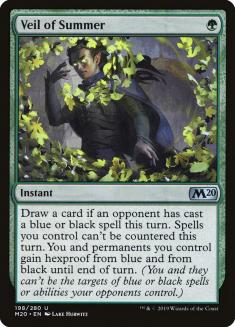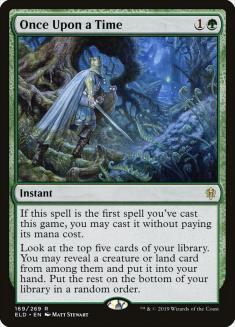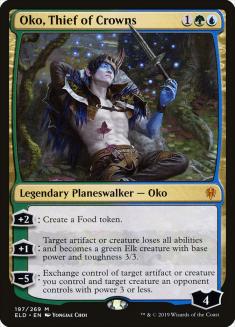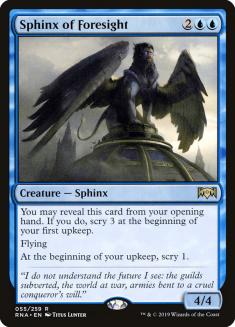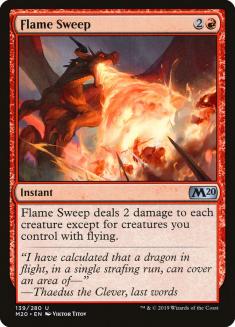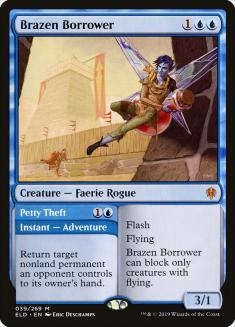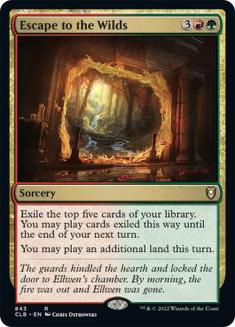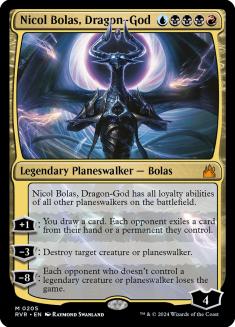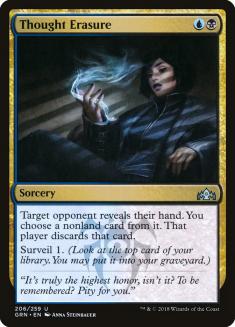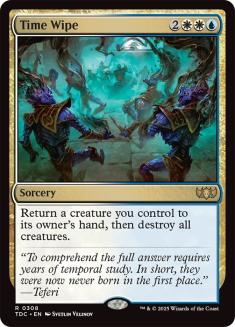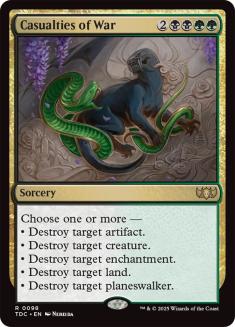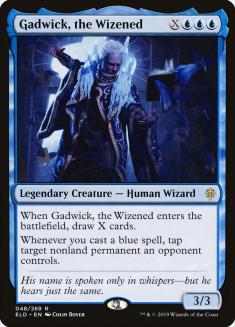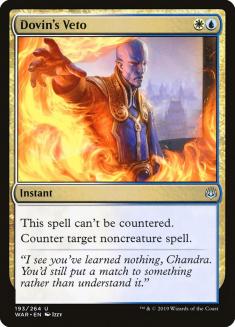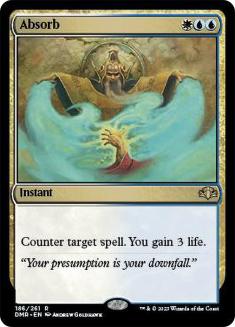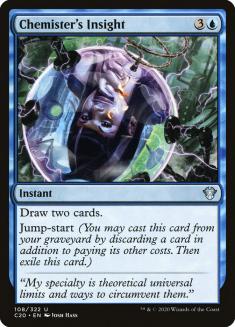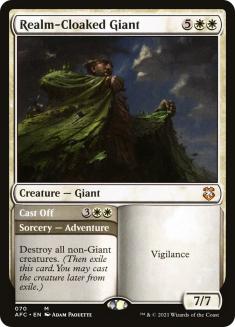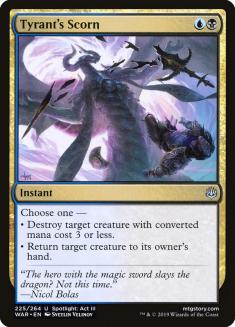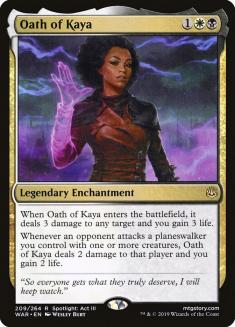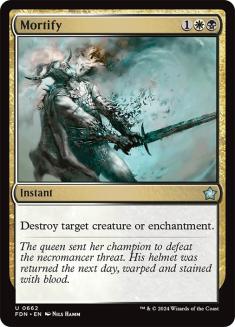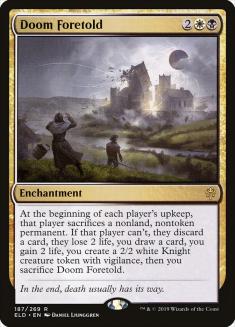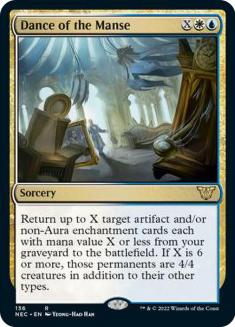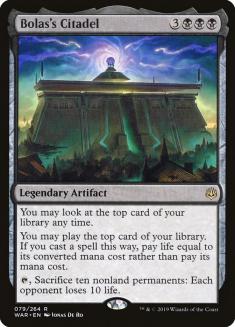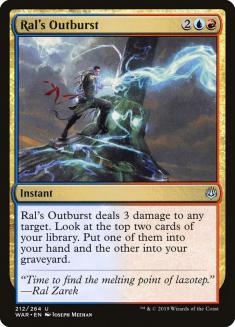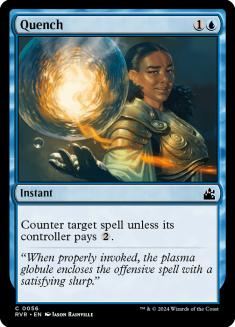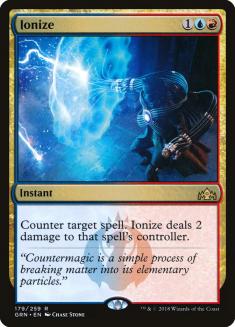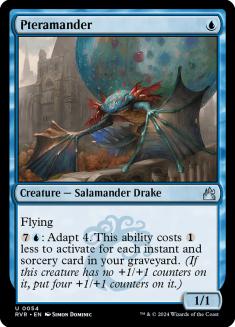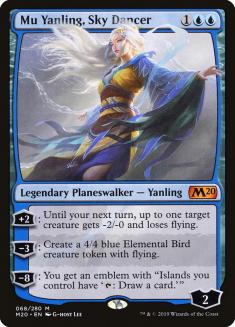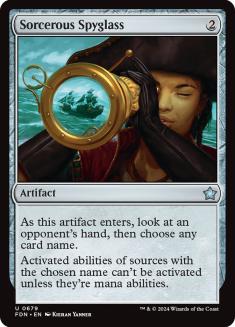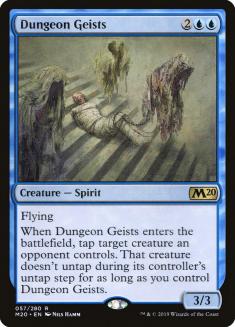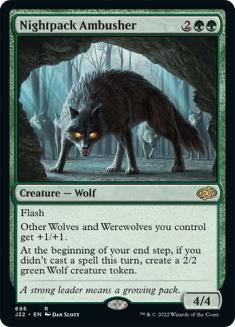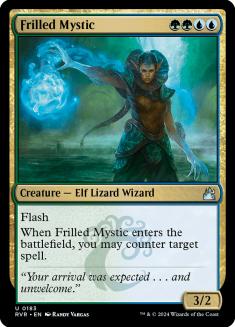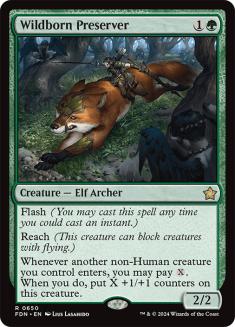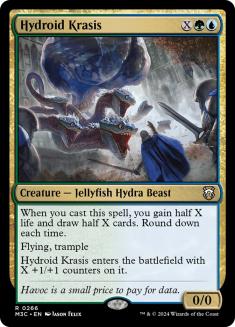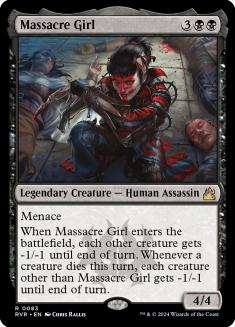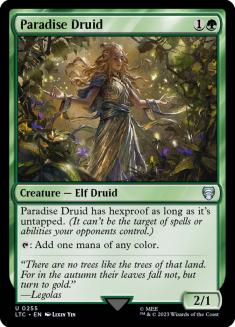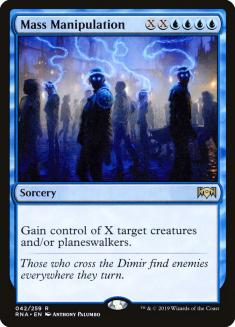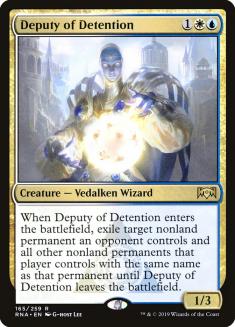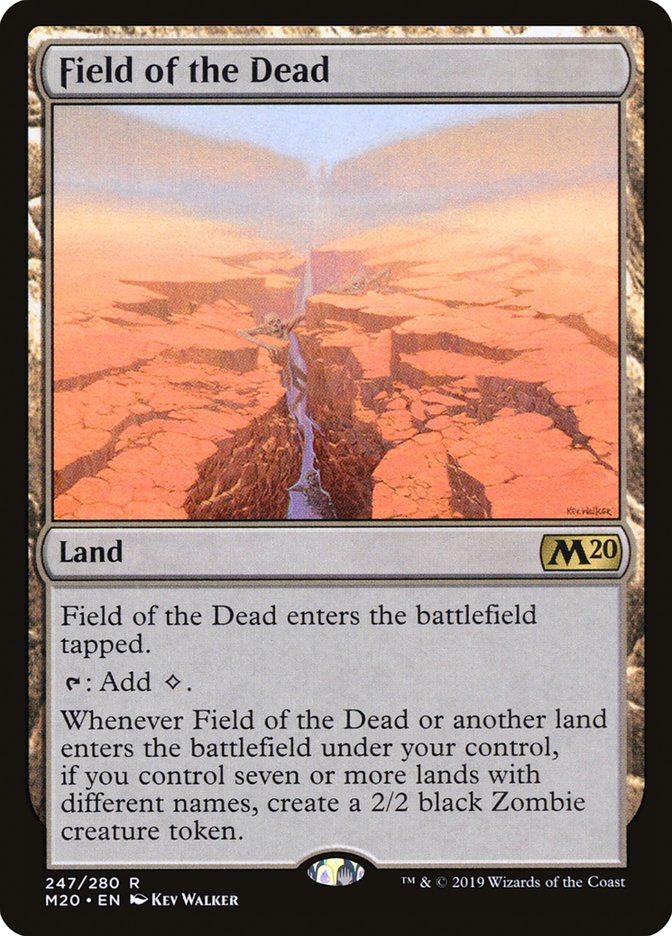Banning three of the absolute best cards in a Standard format is a pretty reliable recipe for table-flipping a format, and when we’re talking about what was once a one-deck format anyway, the effect is only magnified.
With Veil of Summer, Once Upon a Time, and Oko, Thief of Crowns joining Field of the Dead in the “promoted to powered formats only” league, the format was debuted with little time for competitors to adapt in tournaments, such as last week’s Twitch Rivals event, where players had barely days to prepare once the bans were known. This really contributed to the majority of players basically playing updates to existing strategies, rather than reinventing the wheel. That said, we have already seen a fair bit of innovation, as well as some clear pillars to build with in mind. There are also some pretty glaring holes that suggest serious opportunity for savvy players that find the right way to capitalize on them.
First of all, the format really is pretty wide open, though some of the best-performing decks are in for a serious rise in popularity. For example, Jeskai Fires was the most popular strategy on Day 1 of the Rivals event, at 12.4%, but it was also among the most successful (57% win percentage with a large sample size). This has led to the strategy soaring in popularity, including taking half of the Top 8 spots in this past weekend’s online PTQ. Here’s the winner’s list:
Creatures (17)
- 4 Sphinx of Foresight
- 4 Cavalier of Flame
- 3 Cavalier of Gales
- 2 Kenrith, the Returned King
- 4 Bonecrusher Giant
Planeswalkers (4)
Lands (27)
Spells (12)
Sideboard

This new breed of Jeskai Fires is debatably the most important deck to prepare for. It has moved away from the Fae of Wishes package, interestingly replacing the Faerie with Sphinx of Foresight for more consistency and another potent tap-out threat.
I’m suspicious of Sphinx of Foresight, if only because its rate looks a little lower than most of the four-drops that see play in Throne of Eldraine Standard right now. If it’s right to play Sphinx of Foresight, I think it’s gotta be because you believe in both the relative value of a 4/4 flyer right now (which I could believe lines up well, but I’m just not confident in yet, as it seems so bad against stuff like Teferi and Murderous Rider) and you place a premium on the draw smoothing it provides in openers.
Interestingly, Jeskai Fires was one of only two blue decks among the eight most-played archetypes, and while it was very successful, the other blue deck, Temur Reclamation, put only a single player into Day 2. Still, that doesn’t mean the archetype is unplayable; but rather, it might be an opportunity for major improvements to yield big returns. Dominizzi piloted their update to the archetype to a Top 32 finish in this past weekend’s PTQ, with a few interesting card choices pushing the strategy forward.
Creatures (4)
Lands (26)
Spells (30)
- 4 Opt
- 3 Chemister's Insight
- 4 Expansion
- 4 Growth Spiral
- 4 Wilderness Reclamation
- 2 Callous Dismissal
- 4 Flame Sweep
- 2 Mystical Dispute
- 3 Escape to the Wilds
Sideboard

Like Fires of Invention, this strategy relies on a four-cost enchantment to catapult its mana-production into the stratosphere.
Unlike most Fires decks, however, Temur Reclamation plays almost no threats, instead filling out with excellent card draw and mediocre interaction.
Obviously, it’s not that Brazen Borrower is bad. The card’s excellent. I just mean that when this is our interaction, we’re not exactly going to be very reliably able to contain threats. Rather, we’re mostly just trying to bridge until we can find Wilderness Reclamation and sort of “go off.”
One new dimension to the decks, care of Throne of Eldraine, is the powerful card draw/ramp spell Escape to the Wilds:
Escape to the Wilds aspires to be a draw-five with upside, assuming you can play the cards by the end of your next turn. That it lets you play an extra land on Turn 5 or 6 really points to just how big this strategy is aspiring to go. While I think Escape to the Wilds looks pretty exciting here, I still think this strategy is either going to have to figure out a better way to defend itself against fast aggro or reimagine its mid-game to include actual permanents with a battlefield presence.
Would it be silly to maindeck Aether Gust? I mean, who is it bad against? For reference, here were the eight most-played archetypes in the Twitch Rivals event:
- Jeskai Fires
- Rakdos Knights
- Jund Sacrifice
- Golgari Adventure
- Temur Reclamation
- Gruul Aggro
- Rakdos Sacrifice
- Mono-Red Aggro
The card is good to great against every single one of them. Why not use it for better early-game defense? The matchups where it’s not good are generally going to be ones where we can try to overpower our opponents with tons of card draw anyway, right? Like, who cares if we have a few dead cards against an Esper Dance deck? Who doesn’t? The place where it’d be really costly is if someone played white aggro or black sacrifice, both of which seem promising, but neither of which is really showing up very much right now.
I’m not saying I’d shove all-in on Temur Reclamation, mind you. I think the archetype looks fairly dubious. I do think Aether Gust might be an opportunity, though, particularly if one is specifically into this style of deck.
The other pillars of the format, at least thus far, are all Jund-adjacent. Jund Sacrifice has emerged as the early “best” way to play Witch’s Oven and Cauldron Familiar; Golgari Adventures would seem to be the best Edgewall Innkeeper deck; and Rakdos Knights had the best Week 1 win percentage among popular archetypes, kind of setting the pace for true aggro decks.
It’s not like blue cards are weak right now, by the way. I think blue was so inexplicably linked to Oko, Thief of Crowns that it’s actually the color that needs the most reimagining. There are a ton of good blue cards. We’ve just got to take a step back and challenge some of our assumptions built on the old world.
First, there is the assumption that the best evolution of Fires of Invention is getting less greedy. What if we got greedier?
If you can cast it, Nicol Bolas, Dragon-God seems like it could be a big winner in the new world. When people are tapping out for a Sphinx, Cavalier, Massacre Girl, or Nissa, Nicol-Bolas can be a great follow-up. Randomoctopus piloted their Fires of Invention / Nicol Bolas deck to a Top 32 finish in the Standard PTQ:
Creatures (4)
Planeswalkers (11)
Lands (27)
Spells (18)

First of all, Thought Erasure being back on the menu is a big deal.
In a world of mediocre permission, having access to such a high-quality discard spell that also helps make our mana work is fantastic for a deck with tap-out threats like Nicol Bolas. The card had been all but banned on account of its absolutely backbreaking weakness to Veil of Summer; however, with Veil banned, no card has gained as much.
Splashing white for Teferi may seem unnecessarily greedy, but what’s it really costing us? We’ve got four Godless Shrines instead of Swamps, which is a little bit of damage, but beyond that, it’s just Interplanar Beacon (which always helps with Bolas anyway) and Fires of Invention (which is our deck’s engine anyway).
Time Wipe isn’t to be sideboarded in, but rather just an option for Fae of Wishes for when we’ve got Fires of Invention going, like Casualties of War.
I’m kind of interested in exploring non-Fires Grixis decks…
Shocking!
…maybe built around high-rate Adventure two-for-ones, like Brazen Borrowers, Bonecrusher Giant, and Murderous Rider.
Each one is among the best early-game interaction, as well as serving as potent two-for-ones that stack with our planeswalkers and allow us to generate card advantage without resorting to dedicated card draw like Chemister’s Insight.
Here’s an example of the style I could sort of imagine:
Creatures (14)
Planeswalkers (6)
Lands (28)
Spells (13)
- 2 Negate
- 4 Thought Erasure
- 1 Cry of the Carnarium
- 3 Shimmer of Possibility
- 1 Angrath's Rampage
- 2 Aether Gust
Sideboard

Maybe playing the full twelve is too much, but they just look better than most cards to me.
Gadwick may seem a little bit of an oddball here, but it really does play on-message when you think about it. Turn 4 or 5, it can be deployed as a solid small-ball threat. Later, it gives us a way to chain card advantage together indefinitely to take over the game, despite our lack of good sweepers. I’m not sure there shouldn’t be a lot more Gadwicks in the weeks to come, basically everywhere that can support the triple blue, or at the very least, every blue deck that doesn’t already have Hydroid Krasis.
For instance, here’s an Azorius Control deck that 5-0’ed a League last week:
Creatures (6)
Planeswalkers (4)
Lands (27)
Spells (23)

First of all, this particular League was a little strange in that some of the players got to play with all the banned cards, while others didn’t, so definitely grain of salt, and all that.
As for this list, it kind of speaks to some interesting opportunities in the new format. It’s got lots of big winners coming out of the bans. For instance, playing this much permission would have been impossible before Veil of Summer’s ban.
Time Wipe seems excellent in the new format, and looks especially strong alongside Gadwick, the Wizened. Sweepers and card draw always tend to work well together, but when you can actually bounce and recast your Braingeyser, that’s a huge win. That interaction is so exciting to me, I’ve got a little bit of an update on the archetype more focused on it:
Creatures (7)
Planeswalkers (4)
Lands (26)
Spells (23)

Outside of just consolidating the end-game strategies, the major theme of my update is the reduction of overall casting cost, while increasing early-game plays. We may not have a lot of options for plays before Turn 3, but I think we’ve got to play something. Aether Gust helps, of course, and Opt is actually meaningful, here, despite not impacting the battlefield. It gives us more ways to not waste our mana, and it helps set us up so that we’re less reliant on Chemister’s Insight and can instead use that turn to actually impact the battlefield.
I do like the interaction between Chemister’s Insight and Gadwick, despite Gadwick making us less reliant on Insight in the first place. I really like the idea of getting as much of our card advantage as we can from cards that can impact the battlefield, helping make up for our lost tempo in the early turns. I’m not actually sure we’re not supposed to play Realm-Cloaked Giant for additional sweepers with how medium our cheap removal is.
Another possibility is to just suck it up and add a third color. Adding red would really move us a lot closer to Jeskai, which is kind of on everyone’s radar. Instead, I’d like to try something with black, picking up Thought Erasure, Tyrant’s Scorn, Murderous Rider, and Oath of Kaya.
While our mana is clearly worse, this package of early-game interaction is fantastic. Tyrant’s Scorn is particularly noteworthy, as it is excellent early-game interaction that’s never dead on account of its ability to let us pick up a Gadwick or Murderous Rider.
Creatures (9)
Planeswalkers (5)
Lands (27)
Spells (19)

The mana isn’t ideal, but if it comes out smoothly, we’ve got all the right tools. I wish we could play Opt, but we’re already going to be long on tapped lands early, and there’s a good chance that Opt is more costly than usual here. It’d be nice to play more Temple of Silences as well, but it’s so hard to run them alongside a heavy Gadwick core.
I considered just abandoning Murderous Rider for Mortify, making the mana better; but Murderous Rider is just such a stronger card. That said, with how much Fires of Invention, Wilderness Reclamation, Trail of Crumbs, and Doom Foretold there is, maybe Mortify is actually what we’re looking for.
The default way to play Esper, at least thus far, has been Doom Foretold / Dance of the Manse. It hasn’t really found its footing in the new format yet, but it’s another list that seems like it should benefit from Veil of Summer being banned (especially if maindeck Aether Gusts pick up popularity).
Creatures (2)
Planeswalkers (5)
Lands (25)
Spells (28)

My biggest issue with this deck is just how much of the deck is air. We’ve got to spend so much mana doing nothing on so many of our turns. Even when we build a solid advantage, it can fall apart to a Hydroid Krasis, Gadwick, or Edgewall Innkeeper in a hurry.
Esper aficionado Shaheen Soorani recently proposed a return to Esper Hero, which is another way to go about the “play to the battlefield” style of advantage I’ve been speaking to here.
Creatures (11)
Planeswalkers (5)
Lands (26)
Spells (18)

Bolas’s Citadel is definitely a big game and offers us a way to actually go over the top of Hydroid Krasis, Gadwick, and Fires of Invention, at least in some spots.
I’m a little concerned that the deck might be too split between the fast Hero and big Citadel personalities, but there could be something here.
The possibilities for Gadwick are only beginning to be unearthed. For instance, Maybenextime’s Izzet Flash deck is pretty unlike anything popular we’ve seen in big tournaments. The archetype was played in very small numbers in the Twitch Rivals (just two pilots in a 275-person field), but they combined for a 16-9 record, making it among the best-performing strategies.
Creatures (16)
Lands (26)
Spells (18)
Sideboard

First of all, I love the full four Gadwicks here. With just two colors, our mana is excellent. Besides, this list is built very low to the ground, relying on Gadwick to go big, rather than five- and six-drops or four-cost card draw spells that don’t impact the battlefield.
Topically, Ral’s Outburst looks like such a smart addition to the deck. It may not produce quite as much card advantage as Chemister’s Insight, but it does have a very meaningful impact on the battlefield. It’s also nice to have a way to stack with all these Bonecrusher Giants and Shocks to kill bigger threats. We don’t really want to spend two cards dealing with something; but when one or both leave us with something extra, it’s not so bad.
That’s so much medium permission. I love it. Normally, I’d find this sort of approach suspect, but Gadwick really does a lot to help power us through mid- and late-games where so many of the cards we’re drawing are a little harder to use or less efficient than we’d like.
Todd Anderson recently praised Gadwick’s performance out of Mono-Blue Aggro’s sideboard, describing its overperformance as “absurdly good.” Here’s the list he piloted to a Top 64 finish in the Twitch Rivals event:
Creatures (18)
Planeswalkers (2)
Lands (22)
Spells (18)
Sideboard

After having played in the event, Todd advocates moving away from Pteramander, potentially for another Mu Yanling, Sky Dancer and another Island.
He also found the Sorcerous Spyglasses to be lackluster, suggesting Dungeon Geists instead.
Personally, I’d like to try some Gadwicks in the maindeck. The card draw is obviously awesome, but the ability to tap something every time you play a blue card seems fantastic. Here’s a build attempting to incorporate Gadwick at a foundational level:
Creatures (18)
Planeswalkers (2)
Lands (23)
Spells (17)

I’m not sure we’re really getting enough out of staying mono-blue, but you get the idea. While red seems easiest to splash, there’s also the possibility of revisiting Simic Flash. After all, the primary reason this archetype fell by the wayside was the strength of Oko and the ubiquity of Veil of Summer.
Creatures (21)
- 4 Frilled Mystic
- 2 Spectral Sailor
- 4 Nightpack Ambusher
- 4 Brineborn Cutthroat
- 3 Wildborn Preserver
- 4 Brazen Borrower
Lands (24)
Spells (15)

Personally, I’d prefer to get this deck a little lower to the ground, but I’m also not sure on the best direction to take it. You see, Gadwick doesn’t really work as well here as it would with basically any other splash color. Nightpack Ambusher and Frilled Mystic are two of the only green cards you want, and they really take up a lot of the expensive card space. Besides, Braingeysering into Grizzly Bears isn’t the best way to do it.
The other thing that gives me pause is playing a deck with green creatures and mana, yet not playing Nissa, Who Shakes the World or Hydroid Krasis. Aren’t they the really good Simic cards?
Here’s an example of this exact opposite style:
Creatures (28)
- 4 Hydroid Krasis
- 4 Paradise Druid
- 3 Voracious Hydra
- 4 Leafkin Druid
- 4 Gilded Goose
- 2 Questing Beast
- 4 Wicked Wolf
- 2 Wildborn Preserver
- 1 Yorvo, Lord of Garenbrig
Planeswalkers (6)
Lands (25)
Spells (1)

I’m a little suspicious of four Wicked Wolf despite just four Gilded Goose for Food (and no Once Upon a Time to find them), but maybe there are enough small creatures it can eat to make it worthwhile.
I’m also wary about playing twelve mana accelerants in a format with so much Massacre Girl. I appreciate the importance in developing our battlefield quickly; I’m just not sure we can really get away with it.
Once we’re talking about playing a tap-out ramp deck, there’s a natural question: why not play Teferi, Time Raveler? It’s not like the splash is very hard on our mana when we have access to Gilded Goose and Paradise Druid.
Creatures (24)
- 3 Deputy of Detention
- 4 Hydroid Krasis
- 3 Incubation Druid
- 4 Paradise Druid
- 2 Voracious Hydra
- 4 Gilded Goose
- 2 Questing Beast
- 2 Brazen Borrower
Planeswalkers (9)
Lands (25)
Spells (2)

I like the Mass Manipulation top-end in decks like this, particularly when it’s our only nonpermanent spell.
The dimensions it affords us, as well as the amount of leverage it gives us from Nissa, is one of the best parts of these decks.
I definitely like the use of Deputy of Detention over Wicked Wolf. I also appreciate the combined effect of it alongside Brazen Borrowers, Teferi, and Voracious Hydra to actually present a lot of interaction for a deck of nearly all permanents.
There is an alternative approach to Bant Ramp we could consider. Once you decide to play sweepers, it really does make you want to change half the deck. Here’s an example of what it might look like to go the other way:
Creatures (14)
- 4 Hydroid Krasis
- 4 Gilded Goose
- 1 Beanstalk Giant
- 1 Kenrith, the Returned King
- 2 Realm-Cloaked Giant
- 2 Brazen Borrower
Planeswalkers (8)
Lands (28)
Spells (10)

The version involving lots of green creatures is probably better out of the box, but something like this, which is basically a Field of the Dead deck without Field of the Dead, might offer more room for improvement. Right now, a lot of the architecture is built around those Field of the Deads it doesn’t have.
If we can tune it for the realities of the world we now live in, there might be a higher ceiling potential.
The post-ban world is a wild new environment that we’re only beginning to scratch the surface of. With so many basic assumptions about blue decks overturned, I think a lot of the evolution of the format is going to be the story of the evolution of blue decks. Whether control, ramp, flash, or even combo, there’s a lot of opportunity for whoever can crack the code for how to build blue decks in the new world.

